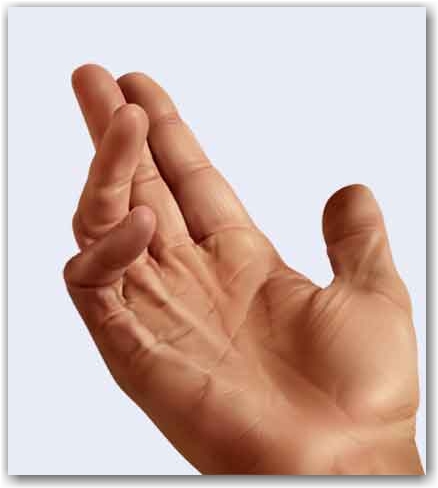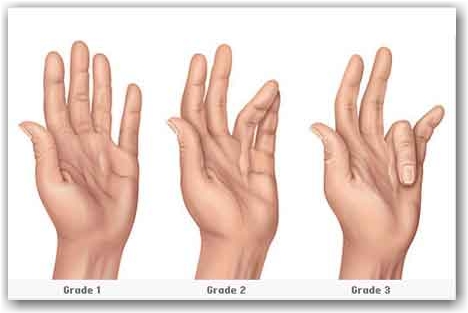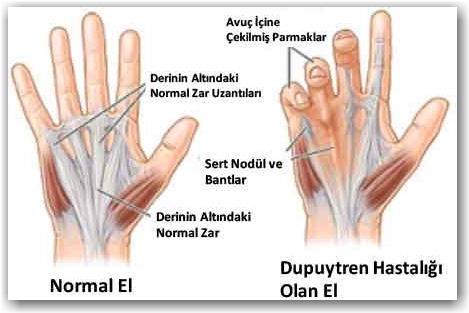
What is Dupuytren’s Disease?
Dupuytren’s Disease is the abnormal thickening of the membrane under the palm skin. It shows itself in the palms with hard nodules and bumps. In some of the patients, hard cords that pull fingers under the skin may be recorded. These cords slowly pull the fingers into the palm over time. Mostly, as the fingers are pulled into the palm, the skin is harden by making folding and the affected fingers cannot be fully opened.
What are the causes of Dupuytren’s disease?
The cause of Dupuytren’s disease is unknown, but biochemical factors in the affected membrane have been shown to be responsible. This disease usually occurs in men over 40 years of age. It is seen mostly in northern European countries around the world. No trauma or a specific occupation of the profession has been proven.
Complaints and Findings in Dupuytren’s Disease
Following complaints and findings are found:
- The disease usually begins with the formation of small and hard nodules in the palm
- These nodules are often adhered to the skin
- In addition to these nodules, other nodules are formed and the cords occur
- The resulting cords and bands move towards the fingers to begin pulling one or more fingers into the palm
- In this condition, serious difficulties occur when washing the hands, wearing gloves, hand shaking or putting the hand into the pocket
- Mostly ring and small fingers are affected
- In many cases both hands are affected, but one is more advanced
- These bumps, cords, and bands in the palm usually do not cause pain
The rate of progression of the disease in advance cannot be predicted. In some of the patients, the lesions in the palm of the hand remain at the same level for many years, while in some cases the fingers may be worsen very quickly enough to bend. Generally advance diseased hands are found to be early onset ones.
How to Treat Dupuytren’s Disease?
In Dupuytren’s Disease, patients are only observed and monitored if there are small stiffness, bumps, and simple cords in the palm which does not negatively affect the movement of the fingers. However, if the fingers cannot be fully opened and are pulled toward the palm where strict and hard cords go to the fingers, surgery may be necessary. There are many surgical techniques used. According to the level and degree of the disease, type of the operation will be explained by your doctor. The aim of the surgery is to correct the position of the finger and increase its function. Despite the surgery, the disease may be recurred later and pulling the fingers into the palm may begin again.
A few summary notes about treatment:
The appearance of a hard nodule in the palm does not indicate the necessity of surgery or does not mean that the disease is progressive.
The ideal correction for surgery is achieved in simple cases. In advanced conditions, full correction may sometimes not be achieved. Especially if the end joints of the finger are affected, then fully correction by surgery may not be possible.
In cases where the fingers are bent in serious conditions, the fingers may need to be covered using skin grafts after correcting the fingers.
After the operation, management of the wounds and functional improvements are gained with properly planned physical therapy and rehabilitation modalities.
Prof. Dr. Eftal Gudemez
Orthopedics and Traumatology
Hand Surgery and Microsurgery

